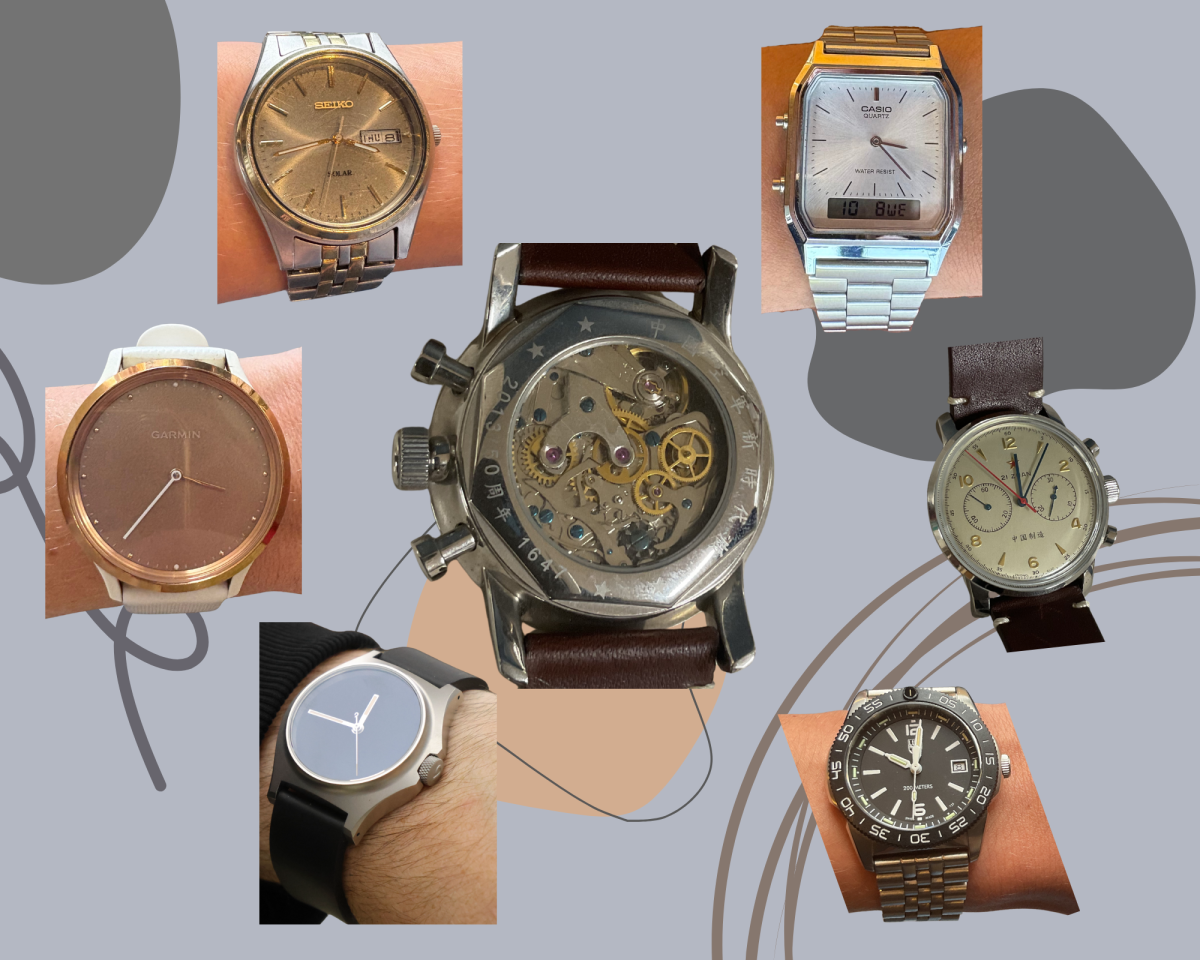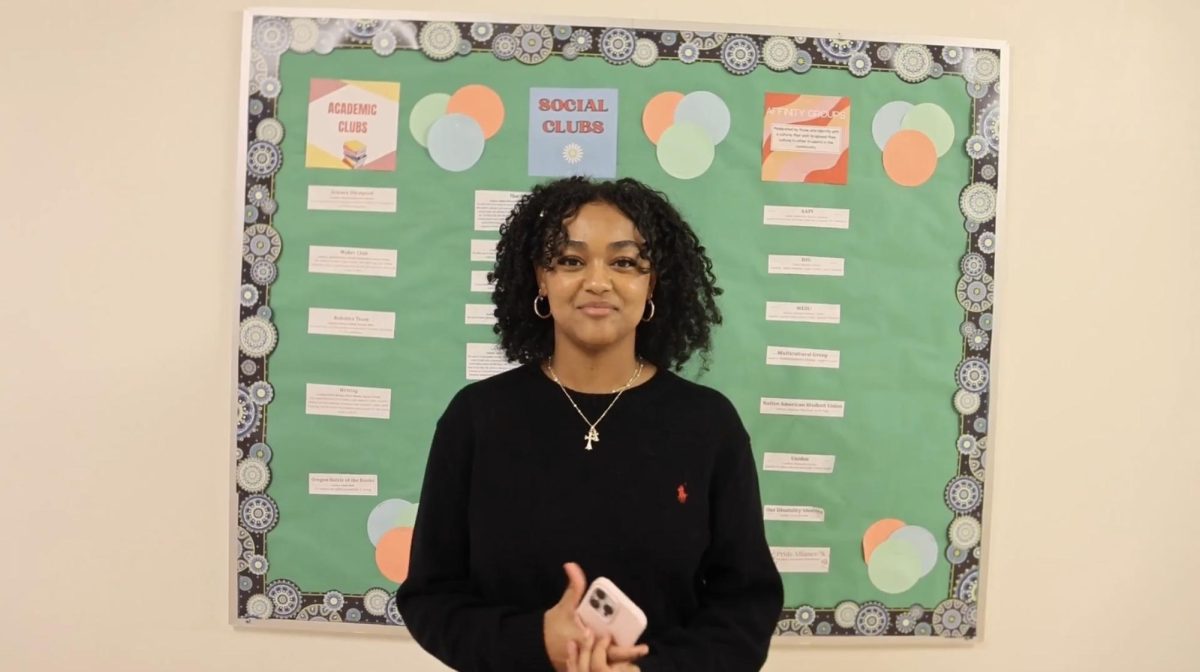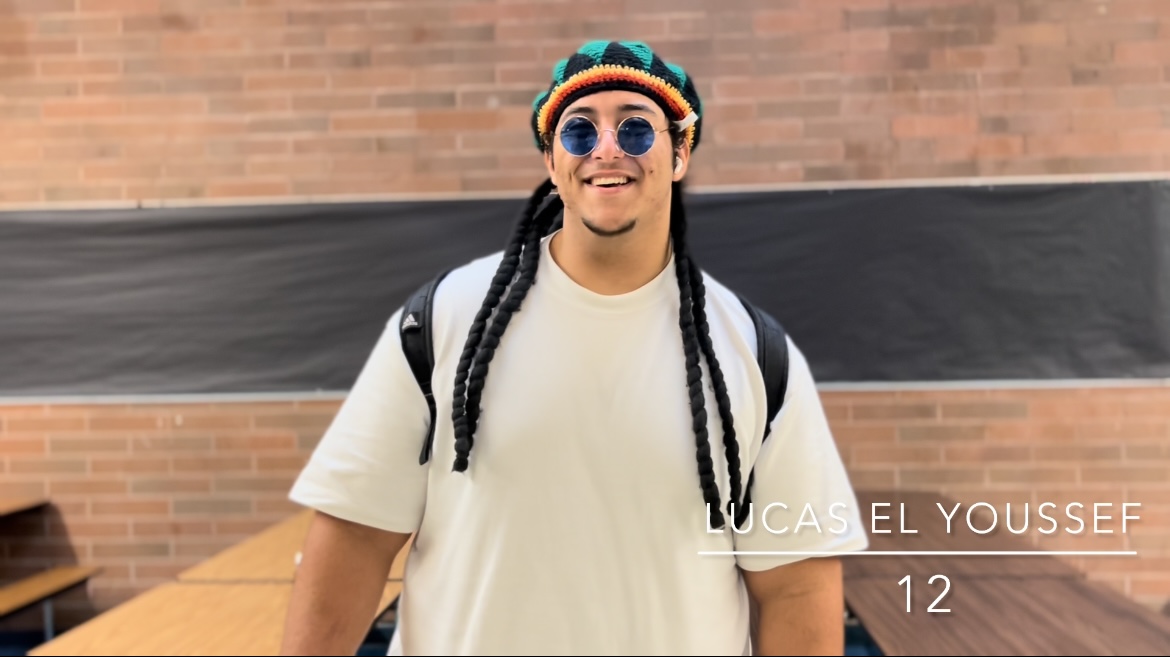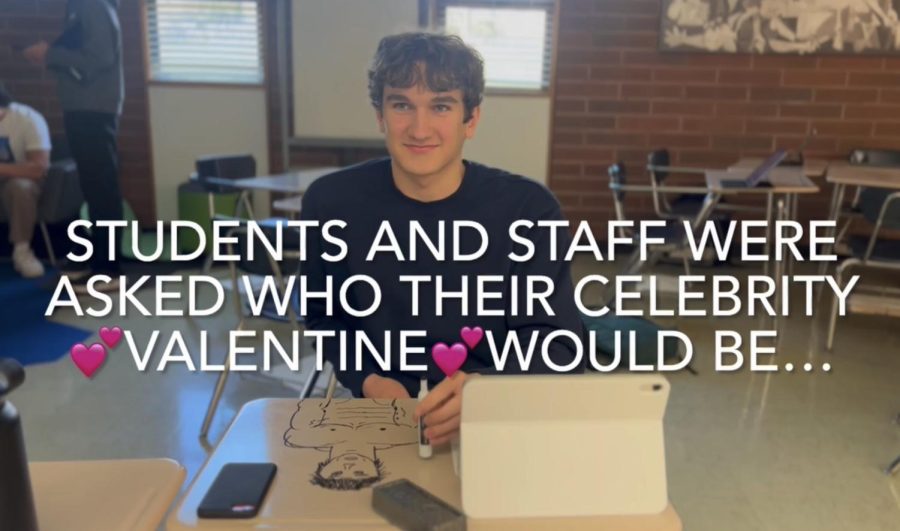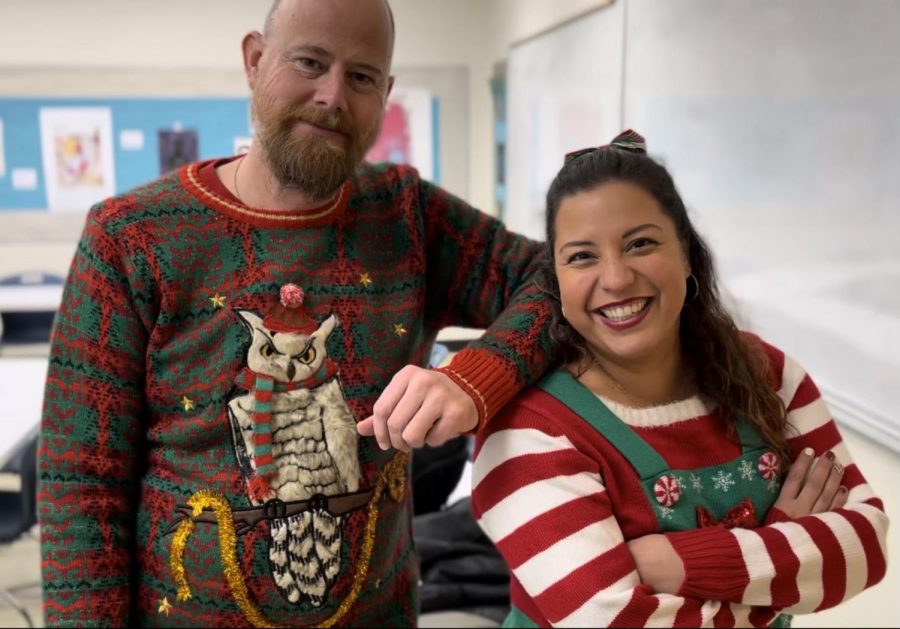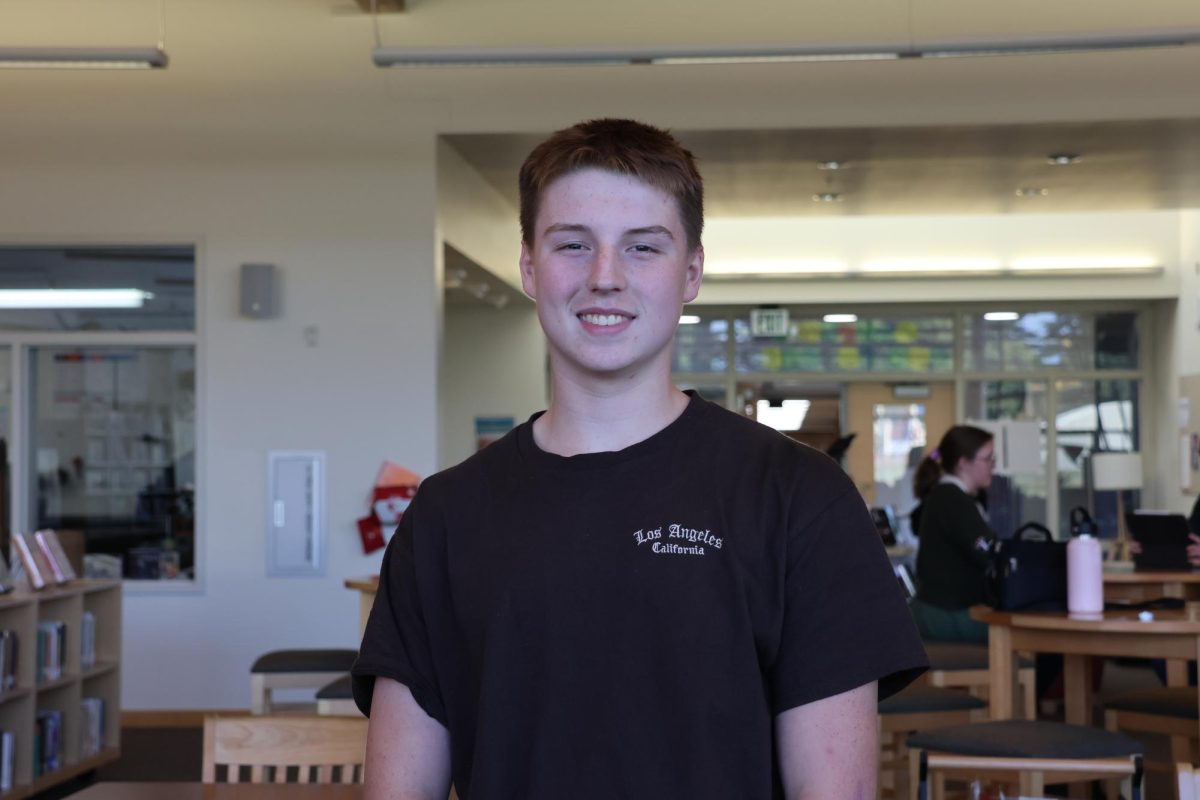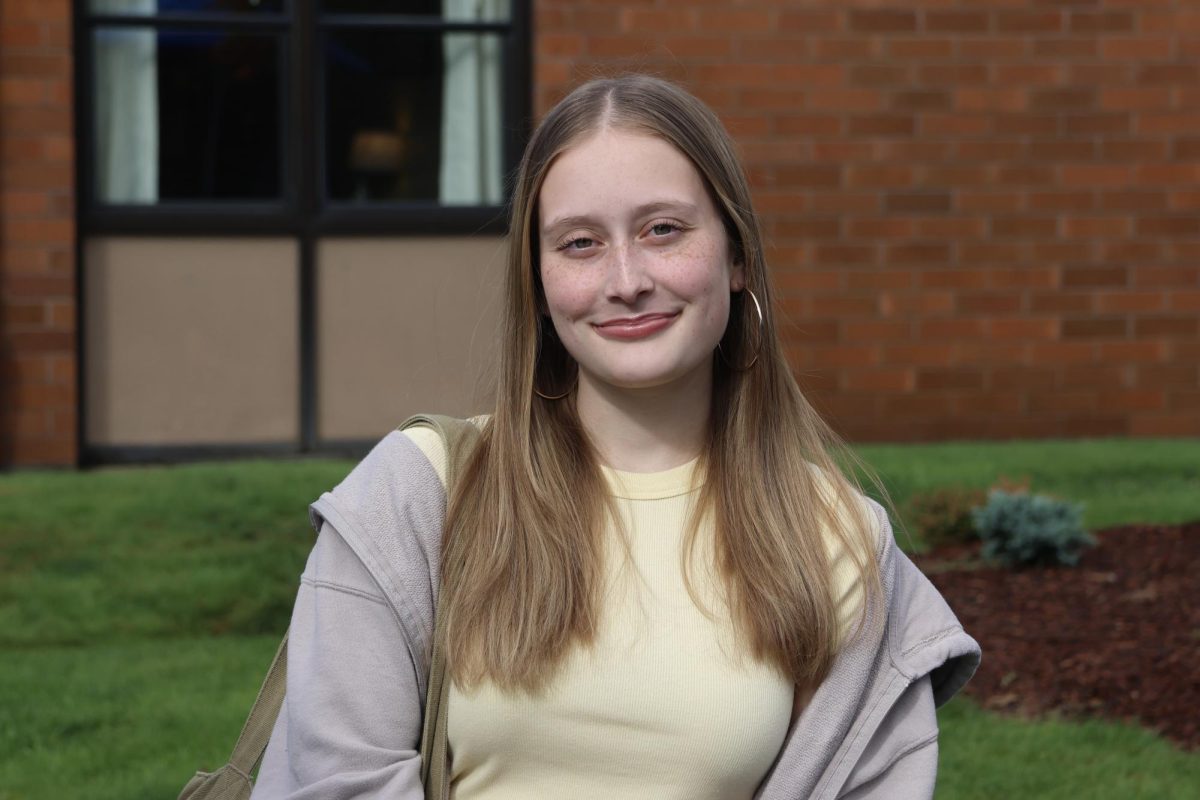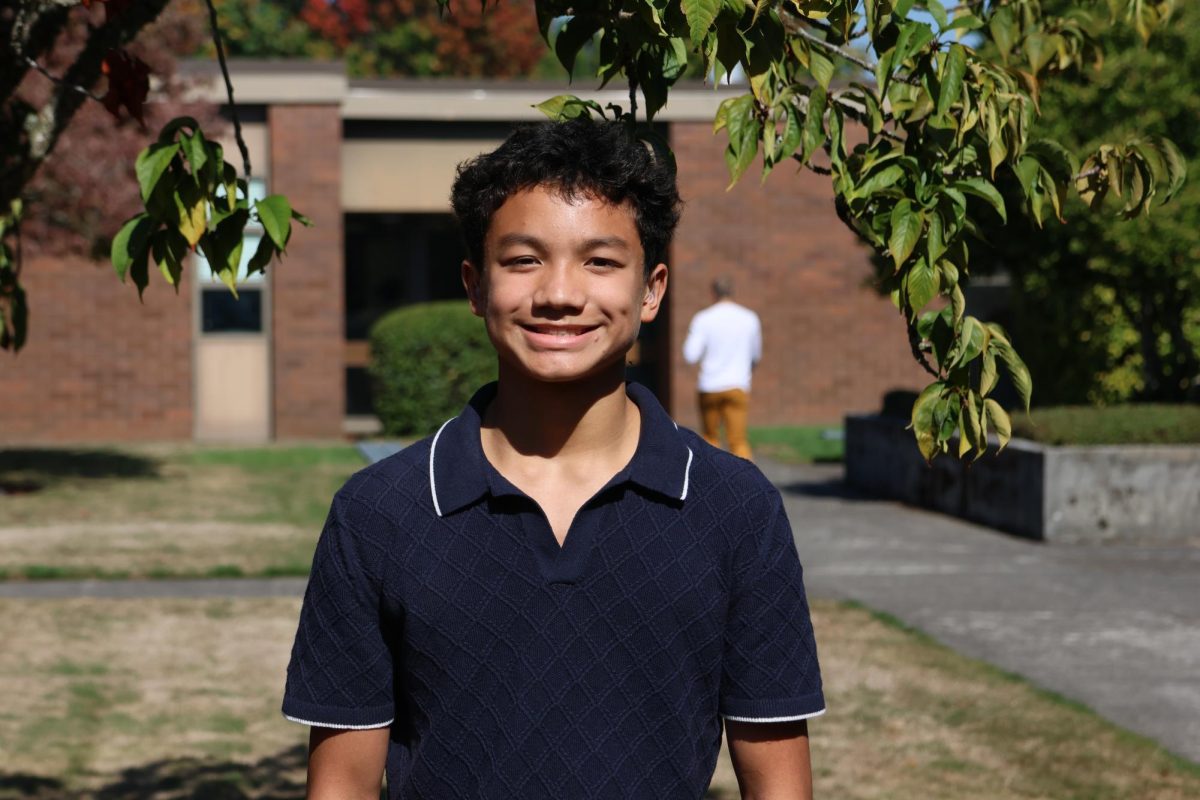In today’s quest for efficiency and streamlined living, smartwatches have risen to the occasion. In addition to being able to tell the time, having a miniature phone on your wrist that enables you to access your texts and browse the internet whenever you want is a valuable tool, so it’s no surprise that plenty of them have popped up around the La Salle campus.
A rarer sight to see is analog watches because they don’t have the same fancy features as a smart watch. Yet, some still prefer this older method of time keeping.
To some at La Salle, an analog watch represents much more than the time; it is a piece of art and an extraordinary engineering accomplishment.
For English Department Chair Mr. Greg Larson, he explained that “displaying the time and organizing the time satisfies both the artistic side of my brain and the mathematical side of my brain.”
Mr. Larson shared his interest in the many parts that compose a watch, such as the dial, font, band material, and the shape and size of the hands.
“There’s not a lot of jewelry that you wear as a man, like I don’t wear earrings, I don’t have any tattoos, but a watch is a way for me to decorate myself in a way that starts a conversation,” he said.
Sophomore Jack Jordan echoed this view, saying that his Casio AQ-230 watch is “kind of like a jewelry fashion piece.”
But that significance can extend beyond the surface level and into the inner workings.
Mechanical watch technology — all those delicately balanced springs and gears — has been a part of human history for centuries, which is quite different from a computer chip found in a smartwatch.
The synergy between components in an analog watch is undoubtedly unique, which Jordan picked up on.
“Not a lot of people wear watches anymore. I mean, they might wear smart watches, but I think analog watches definitely have a type of look to them,” he said.
Besides serving an aesthetic purpose, they also have a practical usage.
At school, Jordan uses his watch to see how much longer class goes for or to quickly check the time when signing out. “It’s very helpful,” he said.
Some of Mr. Larson’s watches have features that, as he said, “many people would consider archaic,” like what phase the moon is in.
Mr. Larson also uses his watches to time activities in class, and he welcomes their slight inaccuracy when he does this.
“It is a good reminder to me to have some flexibility, even though the bells are going to ring,” he said. “And I love that about mechanical watches in particular.”
He also finds a philosophical meaning in his watches. “I think a good watch or a good clock will tell you that every minute is the same, and a good life, a well lived and interesting life, will often tell you that every minute is different, and I like thinking about that dichotomy,” he said.
As much as he loves watches, Mr. Larson recognizes that they can get pricey, and said he wants “to be intentional about what I’m supporting when I spend my limited teacher dollars.” He emphasized that he is at a downsizing stage in his watch collection journey and is trying to support companies that treat their employees well.
Jordan also found the cost of watches as a barrier to him getting more. “I like watches, but they’re kind of expensive, so I don’t really have any,” he said.
However, watches make great gifts, which is how both Jordan and senior Henry Perrin acquired theirs.
Perrin, who has several other watches, considers himself to be “a little bit of a collector,” he said. “I got my watch case and stuff, it’s pretty full.”
He likes collecting because, as he said, “it’s fun, I think they’re stylish, I mean, they can hold value, and it’s just a great way to keep time.”
Perrin’s latest watch is a Luminox Diver’s watch that his dad gave him for his birthday last year. He plans to “take it through college and hopefully through life.”
Not only can watches be a part of people’s futures, but they can also be something to look back on, which is the case for religion teacher Ms. Katie Cassidy, who shared a story about her watch’s past.
One time, she and her husband, a pilot, were flying around the San Juan Islands and were on the ground at the Friday Harbor Airport. She removed her watch and rested it on the plane wing, forgot it was there, and they took off.
When she realized what had happened, they went back at night equipped with headlamps to search for it. They found it, and according to her, “it had in fact been run over by at least one plane. There were tire marks on the watch band.”
The watch still works today.
Another timepiece with a history is Mr. Larson’s “Seagull 1963” chronograph, which he bought with his roommate when he was living and teaching in China.
“I can look at the watch and think of the people and the experiences I had … I can look at some of the Mandarin characters and say ‘oh I know that that one, those two together, mean China,” he said. “Every time I look to check the time, I also get this reminder of ‘that year in China was pretty important, the people you traveled with fundamentally changed your life.’”
And that is just part of owning a watch — every one has their own unique story. Explore the presentation below to learn about the watches of several Lasallians:


